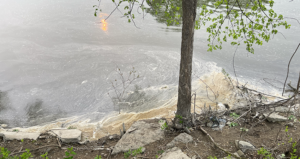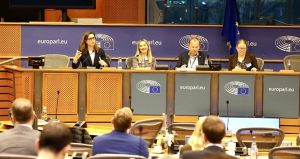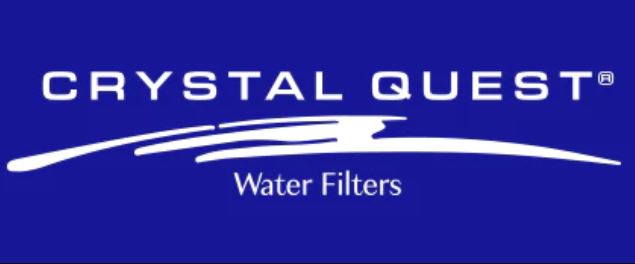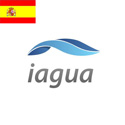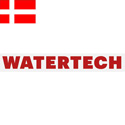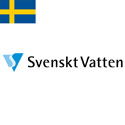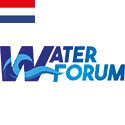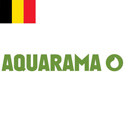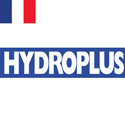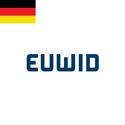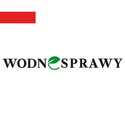Scandinavia leads the way in airport PFAS remediation
-
 Press Release
Press Release
Share article:

PFAS contamination in ground water: The urgent challenge for airports
Author: Jeffrey Lewis, General Manager in Europe for ECT2
Airports worldwide are tackling the critical environmental issue of PFAS (per- and polyfluoroalkyl substances) contamination, primarily caused by the prolonged use of firefighting foams containing PFAS during emergency drills and operational responses. This persistent use has led to widespread contamination of nearby groundwater and surface water, posing significant environmental and health risks.
The use of aqueous film forming foam (AFFF), containing PFAS, in emergency response and firefighting training has raised significant health and environmental concerns. This foam, previously used at airports, military bases, and fire training sites, has contaminated various environments. With new European and global regulations emerging, the airport community is under increasing pressure to investigate, test, and remediate PFAS contamination. These developing regulations will shape the treatment and management of PFAS, potentially introducing future liabilities. As a result, treating PFAS contamination is becoming a critical focus for airports to ensure both regulatory compliance and environmental safety.
In Scandinavia, a major airport has proactively addressed this issue by launching a significant remediation initiative. In 2008, the airport undertook an environmental study, testing for PFAS in surface water bodies across its premises. It was during this study that the team discovered perfluorooctane sulfonate (PFOS) for the first time. Over the next decade, following continuous investigations, it became clear that the main source of PFAS contamination at the airport originated from its fire training facility, more specifically from the type of fire-fighting foam typically used in the past.
Achieving and exceeding removal targets with ion exchange resin
This led to decisive action in 2022 when the airport committed to remediate the primary PFAS source. Launched in September 2023, the ambitious project is setting new benchmarks for environmental responsibility in the aviation sector.
After evaluating several advanced treatment technologies, such as foam fractionation and granular activated carbon (GAC) through a competitive tender, the airport operator selected ECT2’s ion exchange technology, specifically the SORBIX™ PURE resin, for its high efficiency in removing contaminants, including difficult short-chain compounds like PFBA (perfluorobutanoic acid) and PFPeA (perfluoropentanoic acid).
The chosen system was designed to tackle challenging site-specific needs. It was engineered to handle a maximum flow rate of 17 cubic metres per hour, dealing with influent PFAS concentrations as high as 6,200 nanograms per litre. This included tackling several hundred nanograms per litre of notoriously difficult-to-remove short-chain compounds such as PFBA (perfluorobutanoic acid) and PFPeA (perfluoropentanoic acid).

Efficiency in PFAS treatment
The remediation began with a granular activated carbon (GAC) pre-treatment to remove non-PFAS contaminants. Following this, the water was channelled into vessels packed with SORBIX™ PURE ion exchange resin that had previously been soaked in salt water, so that chloride ions attach themselves to the positively charged nitrogen ions in the resin. When the PFAS-contaminated water starts to flow through the system, the PFAS ions displace these chloride ions so that the PFAS is attached to the resin instead of remaining in the surrounding water. This process is what is meant by the term ‘ion exchange’.

As of June 2024, this method had removed 98% of PFAS from the influent water, surpassing the contractual target of 93% and achieving 100% removal of the European Food Safety Authority’s ‘PFAS 4’ (perfluorooctanoic acid (PFOA), perfluorooctane sulfonate (PFOS), perfluorononanoic acid (PFNA) and perfluorohexane sulfonic acid (PFHxS)) from the water onsite.
ECT2’s ion exchange resin offers significant operational advantages over GAC, including 13 times higher efficiency, reduced maintenance, and minimal waste. The resin can also be regenerated, improving cost-efficiency and environmental outcomes.

The custom solution was operational within seven months, treating over 65 million litres of water by June 2024, demonstrating its efficacy and setting new standards for environmental aviation remediation and other industries.
This initiative is part of a broader movement within the aviation industry to reconcile operational safety with environmental conservation. As airports continue to navigate the complexities of PFAS contamination, the balance between maintaining rigorous safety protocols and protecting natural resources remains an important concern. The airport’s commitment to remediation not only mitigates the immediate environmental impact but also sets a precedent for other airports facing similar challenges.
 | About Jeffrey Lewis Jeffrey Lewis brings over 20 years of industry experience to the ECT2 team where he currently leads as Sweden General Manager. Prior to joining ECT2, Jeff has worked in various research and consulting roles for companies such as Tyréns and the Swedish Defence Research Agency, FOI. He is an expert in hydrogeological assessment, remediation strategies and specialises in groundwater contaminant transport. Jeff is past president of the Swedish branch of the International Association of Hydrogeologists and has served on the editorial board of Hydrogeology Journal. He is a member of the Swedish Geotechnical Society, and Naturvetarna, Swedish Association of Professional Scientists, is a Docent (Associate Professor) at the University of Gothenburg, and has authored over 20 consulting reports for the industry. Jeff holds a Bachelor’s and Master’s Degree in Chemical Engineering from Royal Military College of Canada and earned his PhD in Earth Science from the University of Quebec. |
About ECT2
ECT2 , a Montrose Environmental Group company, is a global leader in technology solutions for removing challenging contaminants from water and vapor. The company specialises in PFAS and offers a comprehensive suite of services for understanding and managing its impacts. At the forefront of their solutions is a proprietary and cost-effective approach that utilises synthetic resins for efficient contaminant removal and that “regenerates” this resin to enable multiple reuse cycles, minimising waste. With a track record of successful applications around the world, ECT2’s systems have achieved industry-leading uptime and deliver contaminant removal well below specified limits. With over 350 systems deployed worldwide, the company has treated more than 30 billion litres of water to date.



